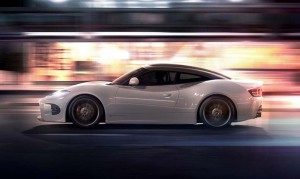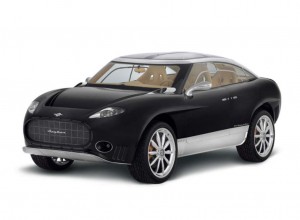It’s been a tough few years for the Dutch sports carmaker Spyker, but the company and CEO Victor Muller may have gotten a much-needed reprieve.
For those who might not recall the name, Spyker was the little upstart that took a big gamble by purchasing Saab, the Swedish car brand parent General Motors was planning to shut down after its own 2009 bankruptcy. But that venture didn’t fare very well, Saab lasting less than two years under the new arrangement before going belly up.
Muller and crew decided to re-focus their efforts on their exotic sports car business, showing off several concept vehicles intended to bring the company a place at the table alongside such competitors as Ferrari and Aston Martin. But financial problems have continued to plague Spyker and it looked like the company was going to have to auction off a significant chunk of its assets to satisfy Dutch tax authorities.
Among the items that were scheduled to roll across the auction block on July 25th were a 2007 Formula One grand prix car, a racing version of the Spyker C8, as well as some C8 Aileron models, the D12 Paris-to-Peking SUV concept and 85 of the Audi V-8 engines Spyker products use for power.
The good news for both Spyker and the tax man is that Muller has managed to wangle up some cash to cover its liabilities – at least for now.
(Mazda planning to reveal all-new Miata MX-5 in September. Click Here to find out more.)
There are plenty of industry observers who question whether Spyker can keep things going, at least in its current form, despite Muller’s own deep pockets.
The bottom line for Spyker is that it needs to get some momentum going, and putting some products into production would clearly help. Despite Muller’s assertion that his company is “moving forward,” it has yet to move on plans to introduce the new B6 Venator, along with a Spyder convertible version.
(Jaguar confirms plans to build limited-edition F-Type Project 7. Click Here for a closer look.)
The Spyker name dates back to 1880, but the original firm went out of business in 1926, seemingly to join the hundreds of other failed brands in that rust heap in the sky. The name was acquired in 1999 by a group of investors led by Muller, a lawyer and entrepreneur from the Netherlands who fancied himself a car designer, as well.
The modern company’s Latin motto translates into English as, “For the tenacious, no road is impassible.” Muller is clearly tenacious, but Spyker has run into one roadblock after another, including a failed and money-losing attempt to enter Formula One in 2007.
(Koenigsegg Agera One:1 smashes through the 1300-hp barrier. Click Hereto check it out.)
Two years later, Spyker fielded the winning bid for Saab, but it barely got the Swedish maker’s plant re-opened before running into serious trouble. Unpaid bills led Saab’s suppliers to refuse to deliver parts, forcing a shutdown of its Trollhatten assembly line. And while several potential Chinese partners came along with much-needed cash, GM refused to give Saab permission to consummate those deals, forcing it into bankruptcy and liquidation.
Spyker filed a $3 billion lawsuit against GM but the courts have so far ruled against the Dutch company. In the meantime, while pursuing the appeals route, Muller has been trying to get Spyker back into the sports car business, but the launch of production has proven more difficult than expected. It claims to have built and sold just two vehicles for all of 2013.
For now, Spyker seems to have sidestepped a fate similar to that of Saab. But whether it has simply delayed the collapse many see as inevitable remains to be seen.


